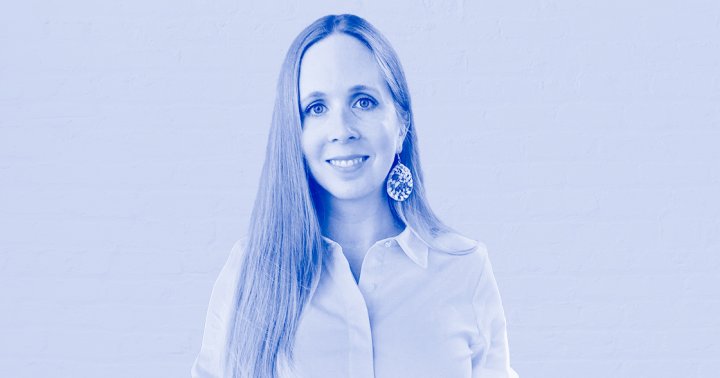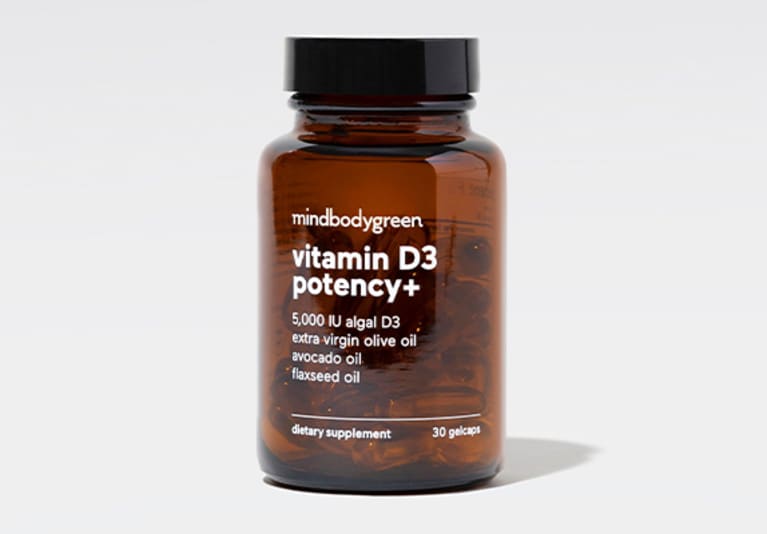I'm A PhD & RD: These Common Vitamin D Myths Make Me Cringe
Hopefully this explainer will steer you down the right path.


Our editors have independently chosen the products listed on this page. If you purchase something mentioned in this article, we may earn a small commission.
November 3, 2021 — 9:26 AM
If mbg Director of Scientific Affairs Ashley Jordan Ferira, Ph.D., RDN, had a favorite micronutrient (a great ice-breaker question, if you ask us), it would be vitamin D. No surprise there: She did her doctoral research on the essential fat-soluble nutrient (in addition to weight management and bone health), so it’s safe to say she knows a thing or two about the science behind the vitamin.
It only made sense to ask her all of our burning vitamin D questions on this episode of the mindbodygreen podcast, including the biggest (and most frustrating) myths she’d like to debunk. Below, Ferira explains the vitamin D blunders that simply make her cringe.
Myth No. 1: A food-first mentality.
It’s a familiar story: Many health media outlets accurately document vitamin D insufficiency (92.5% of Americans don't even get 400 IU a day of vitamin D in their diet; almost half the population of the U.S. is insufficient; and almost one-third are deficient), and then respond with one, single-solution action item: Eat vitamin-D-rich foods. This is wholly unrealistic.
vitamin D3 potency+
Your daily D essential: bones, muscles, immunity, whole-body*

See, vitamin D is naturally found in small amounts in a handful of foods—which are helpful for preventing extreme vitamin D deficiency and its related (serious) consequences for bone mineralization. (For example, 1 cup of milk contains just 100 IU of vitamin D.) But to reach sufficient, healthy levels of vitamin D daily for life? Those amounts do not make a dent.
To get 5,000 IU per day (a science-backed dose to reach serum 25(OH)D goal of 50 ng/ml), Ferira says you would need to consume: 294 cubes of cheddar cheese, 50 glasses of milk or orange juice, 62 cups of cereal, seven cups of irradiated mushrooms, nine servings of salmon, and 113 eggs. You get the point.
“I'm all about a diet-first, food-first [approach] except when it's failing us,” Ferira adds. “And this particular nutrient is the worst offender of that." She explains further here if you'd like a deeper dive.
Myth No. 2: Vitamin D toxicity.
Another pet peeve of Ferira’s? When people declare that vitamin D is toxic simply because it's fat soluble. “That is like a 1982 science textbook. We're in 2021—we need to stop making these sweeping statements,” she says. While vitamin D toxicity is possible, it's much more challenging to reach than you might think, and it’s not even relevant at useful, science-backed supplement doses (like 5,000 IU per day).
We explain the reasoning in full here, but let’s go over the highlights: Unless you're taking mega, mega amounts of vitamin D, toxicity isn't actually a concern. Clinical trials have found that toxicity considerations can happen with a serum 25(OH)D concentration greater than 150 ng/ml. That is three times higher than the range clinicians typically recommend (50 ng/ml) for vitamin D sufficiency.
“The actual clinical science shows that you could even take 20,000 to 50,000 IU of D3 a day, and not only is it not toxic, but these amounts helped the participants actually raise their blood levels to sufficiency,”* says Ferira. “I'm not saying that's your level, but it was successful—not scary.”
The takeaway? Getting too much vitamin D is extremely difficult, and it’s high time brands offer formulas with realistic apprehensions for toxicity, rather than erring on the low, low side of the spectrum (and not helping folks meet their vitamin D needs as a result).
Myth No. 3: The yo-yo phenomenon.
On to myth No. 3: Vitamin D supplementation is a temporary fix. Not only is this simply untrue, but according to Ferira, this notion is a major reason why so much of the nation is vitamin D insufficient or deficient.
“It's a really common scenario,” she explains. People will go get their vitamin D levels checked, find out it’s less than 30 ng/ml (which means you're clinically insufficient), and their doctor might recommend a supplement for eight to 12 weeks or so to bump them back up to the sufficient range.* Then when they get tested again and their levels are above 30 ng/ml (even just slightly above), they’ll stop the regimen—and fluctuate in and out of sufficiency as a result.
Ferira dubs it the “yo-yo” phenomenon (read more about it here). “You will yo-yo from vitamin D sufficiency to deficiency multiple times throughout your life if you don't have a daily ritual with this essential fat-soluble vitamin,” she says. Make no mistake: Healthy vitamin D status requires daily maintenance, and an on-again-off-again approach is not how we’re going to tackle our widespread vitamin D problem in this country.
Myth No. 4: Vitamin D needs to be paired with vitamin K.
Ferira has received a few questions regarding vitamin K2, and she wishes to address the issue head-on: “It is a myth that vitamin K is a required nutrient for vitamin D absorption or activity,” she says. It’s a fine combination, she continues, and brands have historically paired the two because they’re both fat-soluble. But it’s not like vitamin D3 relies on K2 in the gut.
If vitamin D had a nutrient buddy, anyway, it would be magnesium: “Magnesium is an essential mineral,” Ferira says. You want to make sure you're filling that gap because that's at the level of vitamin D conversion and activities.”
Again, nothing against vitamin K2! “Vitamin K2 has growing data for heart health and bone health support, but we don't think those belong together for a vitamin D sufficiency product,” she adds.* Ferira is a fan of a solid array of fat-soluble vitamins in a multivitamin though.
Vitamin D is an essential nutrient that affects multiple functions in the body, including immunity, bone health, and more.* It’s no wonder there are a bunch of misconceptions out there—hopefully these mini explainers will steer you down the right path. And if you’re in the market for a vitamin D supplement, we (including Ferira) love all of these picks.
Enjoy this episode! And don't forget to subscribe to our podcast on iTunes, Google Podcasts, Spotify, or Amazon Music!
If you are pregnant, breastfeeding, or taking medications, consult with your doctor before starting a supplement routine. It is always optimal to consult with a health care provider when considering what supplements are right for you.

vitamin D3 potency+
Your daily D essential: bones, muscles, immunity, whole-body*
vitamin D3 potency+
Your daily D essential: bones, muscles, immunity, whole-body*

https://www.mindbodygreen.com/articles/biggest-vitamin-d-myths

 Lynk
Lynk 
































